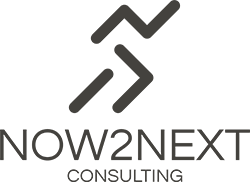Connection could be the key to productivity in the workplace.
Connection can range from beautiful artform to utilitarian need.
Connection is the action of linking one person, thing or idea to someone or something else.
It can range from beautiful artform to utilitarian need. It’s both the affinity for someone or something and the liaison between someone or something.
To truly connect to people, we must understand them. This takes work, humility and vulnerability.
I have the privilege of working alongside an industry leader in the Organizational Development space.
One of the most controversial questions that Gallup poses in their Cultural Index Assessment is: “Do you
have a best friend at work?”
When I found out that the best friend question elicited the strongest response from clients . . . I
wondered why? I know there are several schools of thought. For instance, there are those who keep
their work and personal life in completely separate and non-touching buckets. There are also those who
seek a work environment where they are surrounded by people they consider their friends.
So, with some digging around, I found that the biggest reason Gallup asks whether you have a best
friend at work, is to gauge performance.
Gallup research has repeatedly shown a solid connection between having a best friend at work and the
amount of effort that an employee will expend in their job. Engagement goes from 29% to 63% when an
employee has a best friend at work.
Beyond the science, we are in a time in history where work is expected to be
more than just a paycheck.
Our workplace is expected to have an exceptional culture, to be a place of deeper meaning and value
than just getting paid. Attractive company cultures consist of overall feelings of trust, belonging and
inclusion.
Our work friends can become the first people that we go to for both celebration and commiseration.
Since we spend more of our waking hours at work than anywhere else it makes sense that we build
connections in our team. A solid connection helps us to feel less isolated, and therefore more energized
and motivated to put our whole selves into our roles.
The intentionality behind how to build these connections is important to think about. You don’t
manufacture friendships, but you can create a culture where friendships naturally develop and thrive. So
how do you cultivate friendships in your organization?
See value and bring value.
To truly increase your connection with people, you must value and care about them. You can’t secretly
look down on people and value them at the same time. There is no better way to show people you value
them than by asking for their opinion. Caring about what people think helps you to understand what is important to them. Knowing what is important to them helps you to help them. This brings us to my
second point. We bring value to relationships and further connect with people by helping them achieve
their goals. It’s not just about seeing and calling out the gold in other people, but also intentionally
bringing value into their lives.
Make connections to benefit others, not yourself.
There is a simple relational math equation that John Maxwell states, “To build great relationships, you
need to want more for people than you want from people.” The people who want more for others and
give more than they take are pluses. The ones who want and take more than they give are minuses.
Purpose to be a plus. How is your connection to individuals adding value to the team? Never assume
that a relationship gives us privileges that are not ours. Assumption is a killer in relationships. It needs to
be replaced with an awareness to never take a relationship for granted. Being aware that relationships
never stay the same is critical to growing your connections with people. You must be intentional about
adding value to continue being a plus in another person’s life.
Create Great Memories for People with Sincerity.
In order to truly maximize the experiences of our lives, two things are essential: intentionality on the
front end and reflection on the back end. When we can help another person do these two things it
becomes very special for them because it creates a lasting connection and often a positive memory.
Most of us have traditions and memories on special days. However, challenge yourself to connect with
others by making memories out of everyday experiences. These normal, seemingly small moments forge
lifelong bonds. When you are with people ask yourself:
What can I say that will affirm those around me?
What question can I ask that they will find interesting to discuss?
What can we do that will be different and fun?
What do I know that they would want to know?
Any of these can lead to great memories, which in turn can lead to great connection. The key is high
intention, deep sincerity, and consistency.
When people possess a deep sense of connection with their team members, they are driven to take
positive actions that benefit the whole organization—actions that they may not otherwise even consider
if they did not have the strong relationships with their coworkers.

